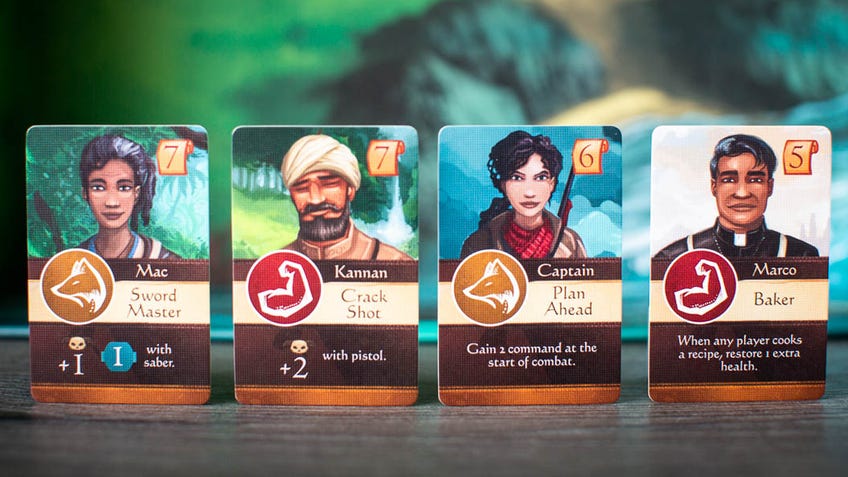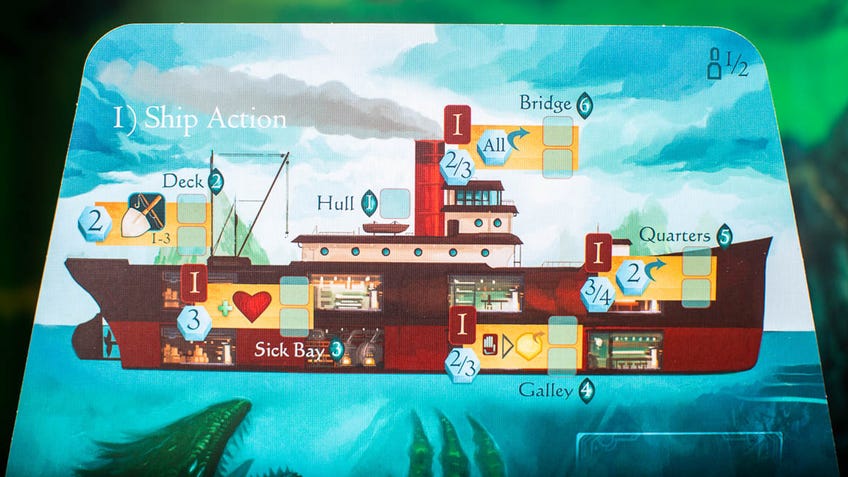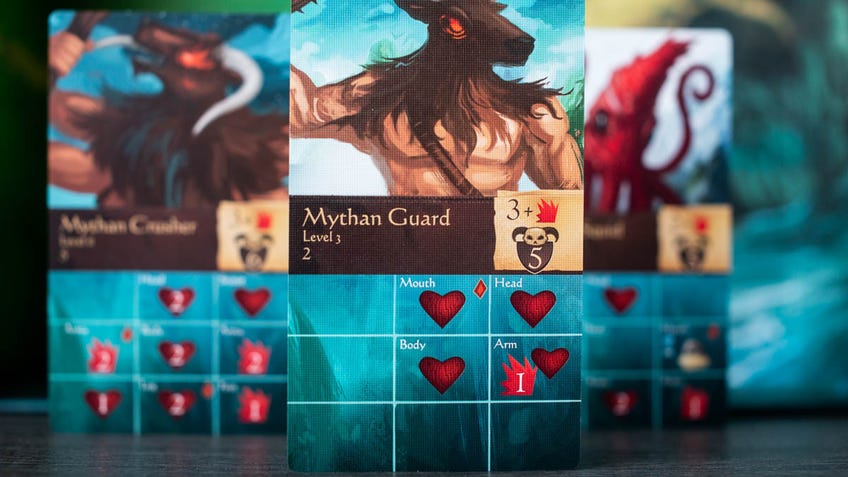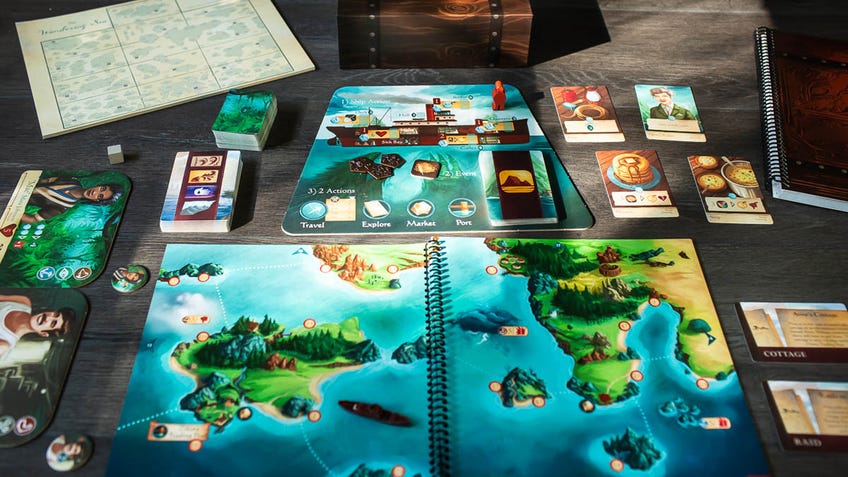Sleeping Gods is the greatest video game board game that isn’t based on a video game
Don't sleep on it.
Tabletop adaptations of video games are everywhere nowadays. From enormous open-world beasts like Elden Ring and intense shooters like Apex Legends to indie basically-a-board-game-already darlings such as Slay the Spire and Dorfromantik, it’s all but impossible to avoid the latest mountain of cardboard and miniatures based on a video game hot property.
That’s not necessarily a bad thing, because video game board games have also never been better! Gone are the days of generic cash-ins, replaced by thoughtful, faithful (sometimes to a fault) adaptations that aim to capture the atmosphere and mechanical depth of video games on the tabletop. Just look at the tense Sniper Elite board game, the gleefully stealthy Assassin’s Creed: Brotherhood of Venice or A New Dawn’s inventive take on strategy classic Sid Meier’s Civilization. Even that once-terrible Dark Souls board game is sort of worth playing now.
Still, even with video game adaptations finally hitting their stride, it turns out they’re often still no match for a properly immersive tabletop title that can beat them at their own (board) game.
Case in point: Sleeping Gods. Designer-artist auteur Ryan Laukat’s seabound adventure manages to capture the thrilling discovery and freedom of an open-world video game in the vein of Elden Ring, Skyrim or The Witcher, without being tied to a familiar licence. It also manages to utilise some of the best things about video games as a whole - their flexibility, convenience and depth - without feeling saddled by trying to recreate them exactly. The key to its excellence is inspiration, rather than imitation.
The key to Sleeping Gods' excellence is inspiration, rather than imitation.
Sleeping Gods puts players (it plays as easily with one person as it does with up to four) in control of the good steamship Manticore and its crew, led by Captain Sofi Odessa. Transported to a mysterious world, the crew must sail between islands and landmarks, uncovering clues about what’s going on in the hope of making it back home. If you’ve played the masterful Sunless Seas, you’ll have an idea of what to expect. (Although don’t expect quite the same level of quality writing.)

As a board game, Sleeping Gods’ rules are fairly simple. Each turn, the active player moves a shared crew meeple to a new room aboard the ship, gaining bonuses such as cards and resources, before resolving an event card and taking two actions. These actions are the things you’d expect, like moving between spaces on the central map (a book serves as the game’s atlas board) and interacting with things you find around the world. Sounds pretty much like a board game so far, I’ll admit.
But Sleeping Gods finds its brilliance in an engrossing world and interesting choices rather than pure gameplay complexity - making it feel closer in many ways to its video game brethren than its cardboard cousins.

Visiting locations requires the player turning to a numbered entry in a stocky storybook, reading the passages aloud before making decisions or attempting skill tests to branch the story in a number of directions. You might happen upon a town being besieged by ratfolk, and choose whether to fight them directly, put out nearby burning houses or run away. In trying to obtain a map from a woman in her remote cottage, you could sweet-talk her, take it by force or even burn her cottage down in defiance. The choices feel broad, and the outcomes varied - with hundreds of potential story moments as you play.
Quests feel akin to spotting something enticing glinting in the distance in The Legend of Zelda, or spying a subtle puzzle clue in adventure classics like Myst.
Making things feel more like a video game’s open-ended emergent narrative - created by the players’ actions, rather than railroaded along a set path - than the often limited possibilities afforded board games by limited cards and components is the quest system. Players start out with simple clues pointing them in the direction of main objectives, and can amass a number of possible quests - not unlike having your log stuffed with side quests in The Witcher or Red Dead Redemption.
Rather than being explicit ‘go here, do this’ commands, these are more akin to gentle hints - rumours that something may lie to the north-east of a landmark, or talk surrounding a particular area. Adding to the satisfying immersion is the way that Laukat’s illustrated maps contain visual clues not found on the cards. Landmarks mentioned in passing - a bridge, red rocks, a shipwreck - can be seen on the board and used to help guide you to your next destination. It feels akin to spotting something enticing glinting in the distance in The Legend of Zelda, or spying a subtle puzzle clue in adventure classics like Myst.
Quest cards obtained by progressing along each story path also add keywords to the players’ inventory - cryptic phrases like ‘raid’, ‘shrine’ and ‘abysmal’. These work to make Sleeping Gods’ world reactive to the players’ actions and decisions, making its places and inhabitants come alive as each lengthy campaign wears on. Keywords direct players to read different passages from the storybook, so visiting a location with ‘pink’ in your inventory might spark a different chain of events than without it, while revisiting a town you saved from foes (indicated by another keyword) could see it rebuilt and able to offer you aid. It feels impressively dynamic for a board game powered by sheets of paper and card, an accomplished evolution of choose-your-own-adventure books and the RPG-lite progression of campaign games.

While story is clearly the focus, players can end up in combat. This too feels like it owes a debt to video games. Enemy cards are divided into grids, with each square containing an icon representing their hit points, attack power and other abilities, such as status effects. Damage dealt by players - using a simple card-draw test similar to non-combat skill checks - can be placed over specific squares to reduce enemies’ strength and stop their more dangerous effects from triggering. The tactical positional element is similar to targeting weak spots on a video game boss, slicing off tails, limbs and horns to help bring down a fearsome foe. Battles are used sparingly, but the satisfying strategy involved means they’re just as engrossing as the exploration.
Sleeping Gods shows you don’t need a familiar licence to make a board game that captures many of the best parts of video games.
Importantly, Sleeping Gods doesn’t hem in its grand ambitions of an open-ended world and player-directed storytelling with the restrictive limitations sometimes seen in other narrative board games. There are no victory points here, no clear win condition (aside from the hints at your main quest). Even the idea of a single “playthrough” breaks away from the rigid start and end of conventional board games. There is no fixed end to a single session; players simply choose where they want to pause their campaign, recording their progress on a dedicated sheet to pick it up another time. With the game’s campaign spanning up to 20 hours, its epic structure is more like that of a video game than the repeated plays of a tabletop title. (And, even then, you might not see everything on your first time through.)
Sleeping Gods shows you don’t need a familiar licence to make a board game that captures many of the best parts of video games, without sacrificing the things that make tabletop gaming unique and enthralling in its own right. It’s a sprawling, engrossing epic that I can’t wait to explore further - and has left me excited to see where the board game's upcoming sequel Distant Skies goes next. Big-name video game adaptations, take note.


